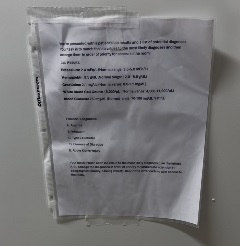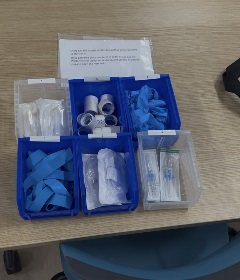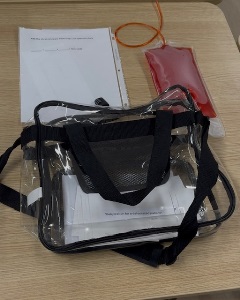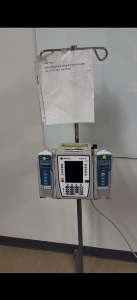HomeGrown Solution: Unlocking Minds: The Educational Escape Room Experience
Title
Unlocking Minds: The Educational Escape Room Experience
Submitted by
Megan Lynch
HomeGrown Solution Number
Identification of the Problem
The need for effective and engaging methods to teach and reinforce clinical skills is ubiquitous across health care education. Traditional training methods often fall short in providing realistic, high-pressure scenarios that health care professionals will inevitably encounter in their practice. Students often disengage in a traditional lecture-based environment and fail to practice skills once taught.
The escape room format, with its inherent challenge-based structure, offers a novel solution to bridge this gap. It allows learners to engage in a series of interconnected tasks that mimic real-life clinical situations, thereby promoting the application of theoretical knowledge in a practical, hands-on manner. By merging the engaging elements of an escape room with critical clinical skills training, this approach not only enhances learning outcomes but also fosters a stimulating and enjoyable educational experience.
Unique Idea
Traditional simulation exercises often struggle to fully engage students, resulting in a lack of motivation and suboptimal retention of essential skills. Furthermore, these exercises can sometimes feel repetitive and disconnected from real-world scenarios, diminishing their effectiveness. The skills-based escape room offers a novel solution to these challenges by integrating the engaging and interactive elements of an escape room with practical nursing skills training. This idea was adapted from a "Nurse Tim" lecture on virtual escape rooms and gamified learning. By translating the idea of an educational escape room into a skill based, hands-on experience, the idea transformed into a viable option for simulation.
Objectives
- The learner will accurately perform the clinical skill of focus (IV starts).
- The learner will demonstrate clinical reasoning and problem solving by successfully making it through the escape room.
- The learner will demonstrate effective communication with teammates during collaborative tasks and problem-solving activities.
- The learner will engage in a competitive learning environment through hands-on practice in realistic, high-pressure scenarios.
Supplies/Ingredients
- Math problems (printed)
- Two to four printed puzzles related to the skill of choice. Explaining to students what the challenge is and what they need to do to solve it
- Two to three clear bags or bins for printed puzzles to go inside of, and locks to close
- Programmable locks
- IV start supplies
- IV arms (one per student in group)
- IV pump
- Manikin or arm for name band
- Printed order sets
Steps to Creating the Solution
1. Define your goals and objectives. Clearly outline the skill(s) students should master upon completion of the room. This could be a combination of soft skills like communication, with practical skills such as IV starts. Watch the video from timestamp 0:01 to 0:10 for a demonstration.
2. Brainstorm interactive challenges to help meet the objectives of step one. Break down the required skills into smaller components that can be turned into challenges. Challenge ideas include math problems, ordering steps of a procedure, finding the missing step in a procedure, locating the correct anatomical areas, or matching activities. Aim to create a fun, competitive atmosphere that keeps students engaged and motivated. Refer to Image 1 below for a visual example.
3. Create multiple interactive challenges for each step that align with the objectives. Each room should have more than one challenge. Each challenge should connect to the main skill and should foster critical thinking, problem-solving abilities, teamwork, and communication. Refer to Image 2 below for a visual example and watch the video from timestamp 0:10-0:30 for a demonstration.
4. Design the physical room. Using the challenges created above, create a layout that facilitates movement and interaction, mirroring real-life clinical settings. Each challenge should move the students to the next step upon completion. For example, students might solve math problems, which when solved correctly opens the lock to the next step. Props and printed material will need to be used. Refer to Image 3 below for a visual example.
5. Gather props and training equipment necessary for the escape room experience. Place all materials and props in the room in order of use, ensuring they are accessible and relevant to the tasks at hand. Refer to Image 4 below for a visual example and
watch the video from timestamp 0:30-1:07 for a demonstration.
6. Conduct a trial run of the escape room with participants. Gather feedback to identify areas for improvement, ensuring the escape room meets its educational goals and provides a valuable learning experience for students.
Images
Video
HomeGrown Disclaimer
The information contained within this website is for information purposes only. While the website is monitored in an attempt to keep the information up to date and accurate, be aware that there are no representations or warranties of any kind, express or implied, about the completeness, accuracy, reliability, and/or suitability being made. The sponsors of this website are not liable for any loss or damage that may result from using information contained within this website. Any reliance you place on the information contained within this website is strictly at your own risk.
Please note that sections of this website include postings of individuals not associated with the website sponsors. These postings are not endorsed or warrantied by the website, and use of such information is at your own risk.
Always check the user guide/manuals provided by the manufacturer of your manikin or task trainer. Using products that are not sanctioned may invalidate the product warranty. (For example: Some products could stain the skin on a manikin. Liquids used around electrical parts may cause malfunctions.)





